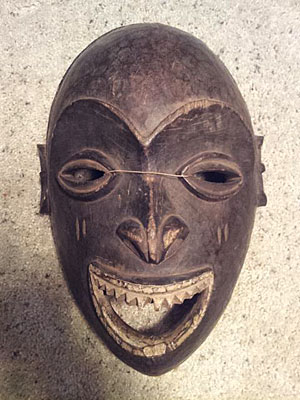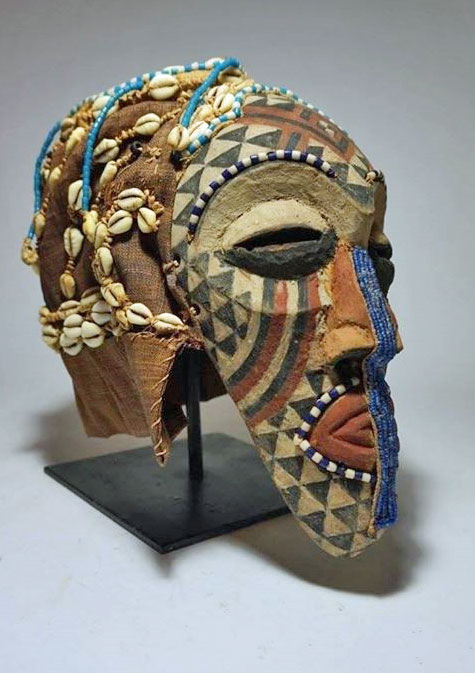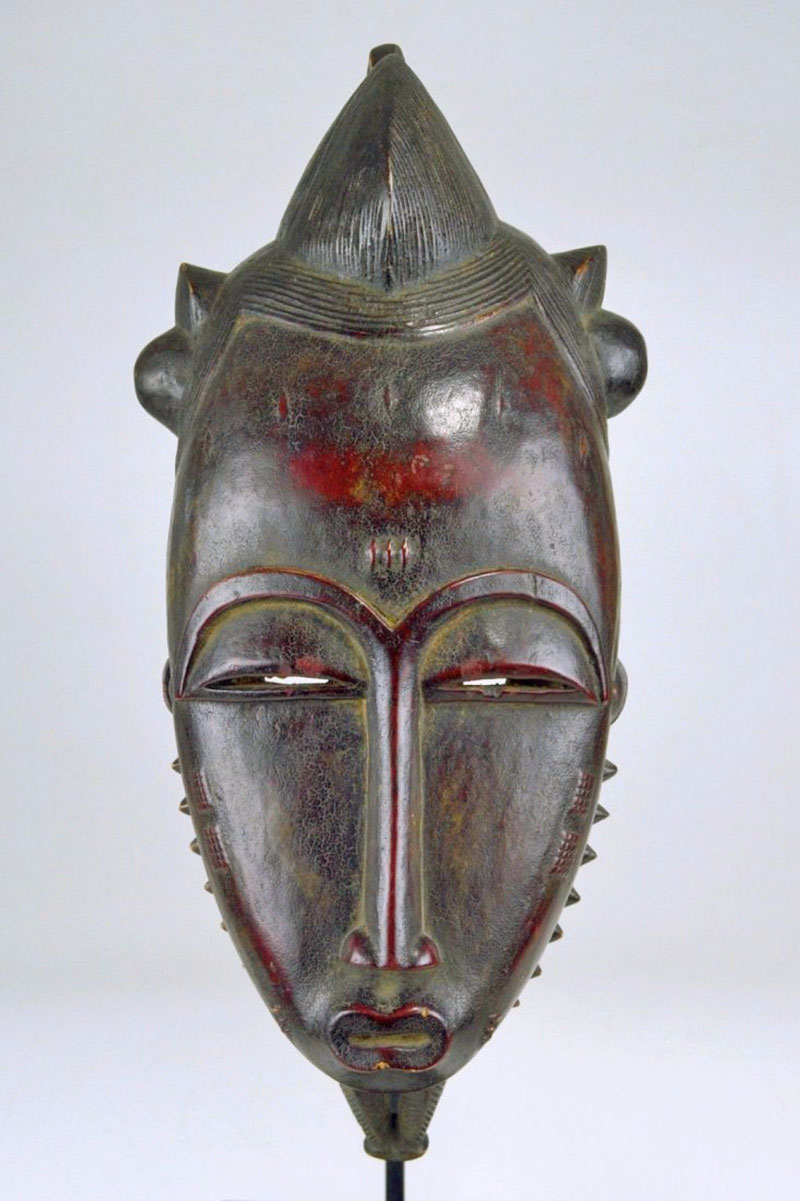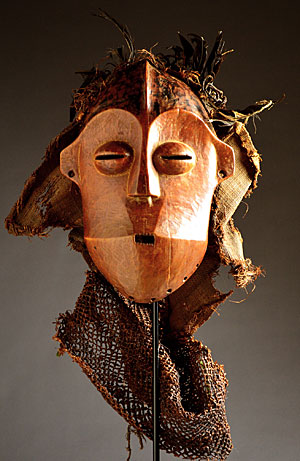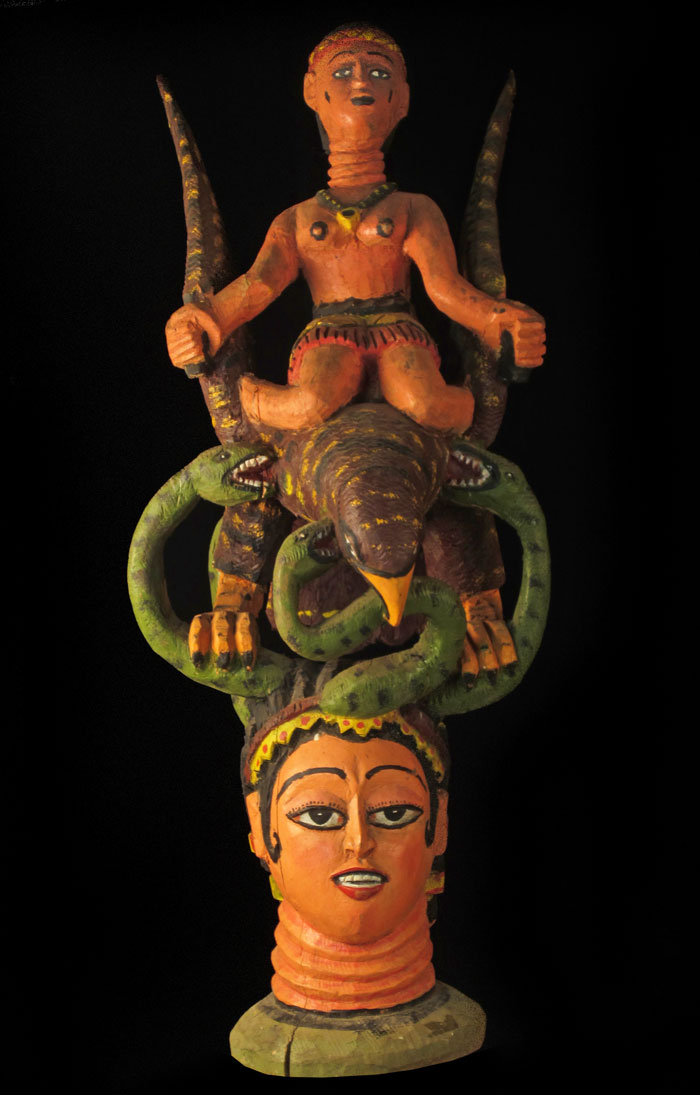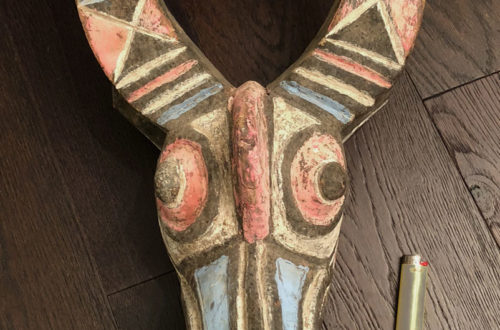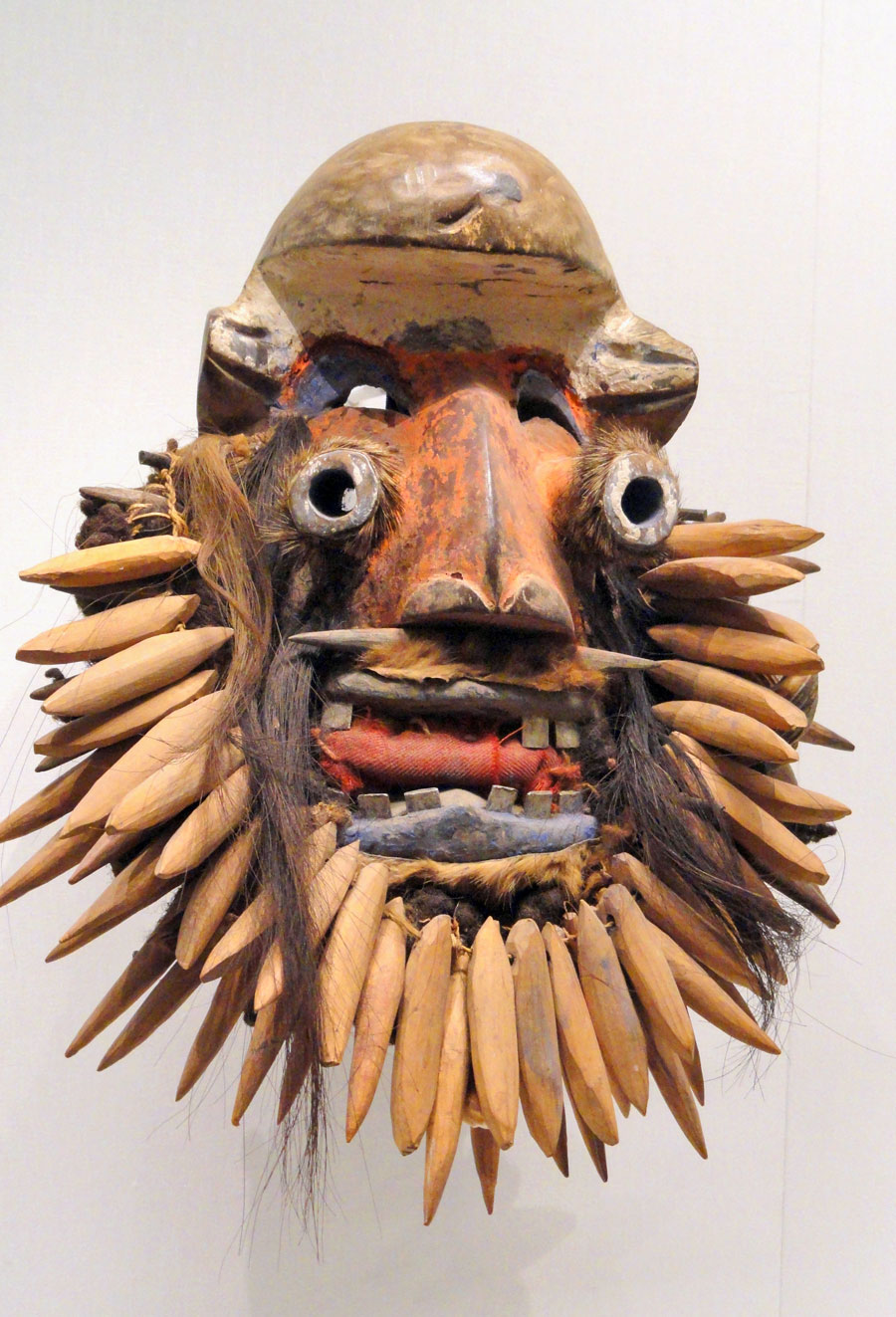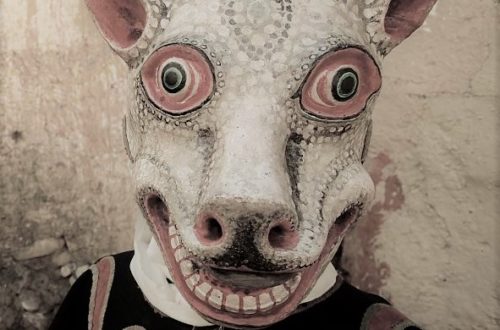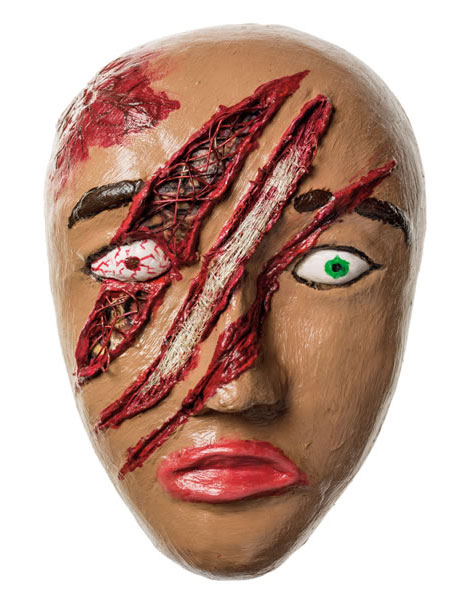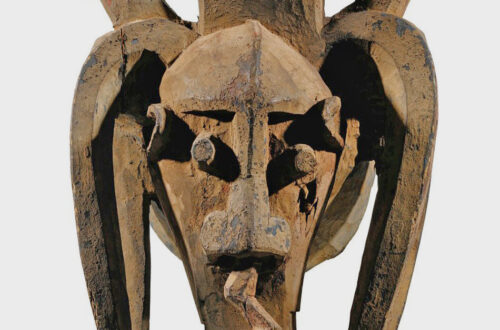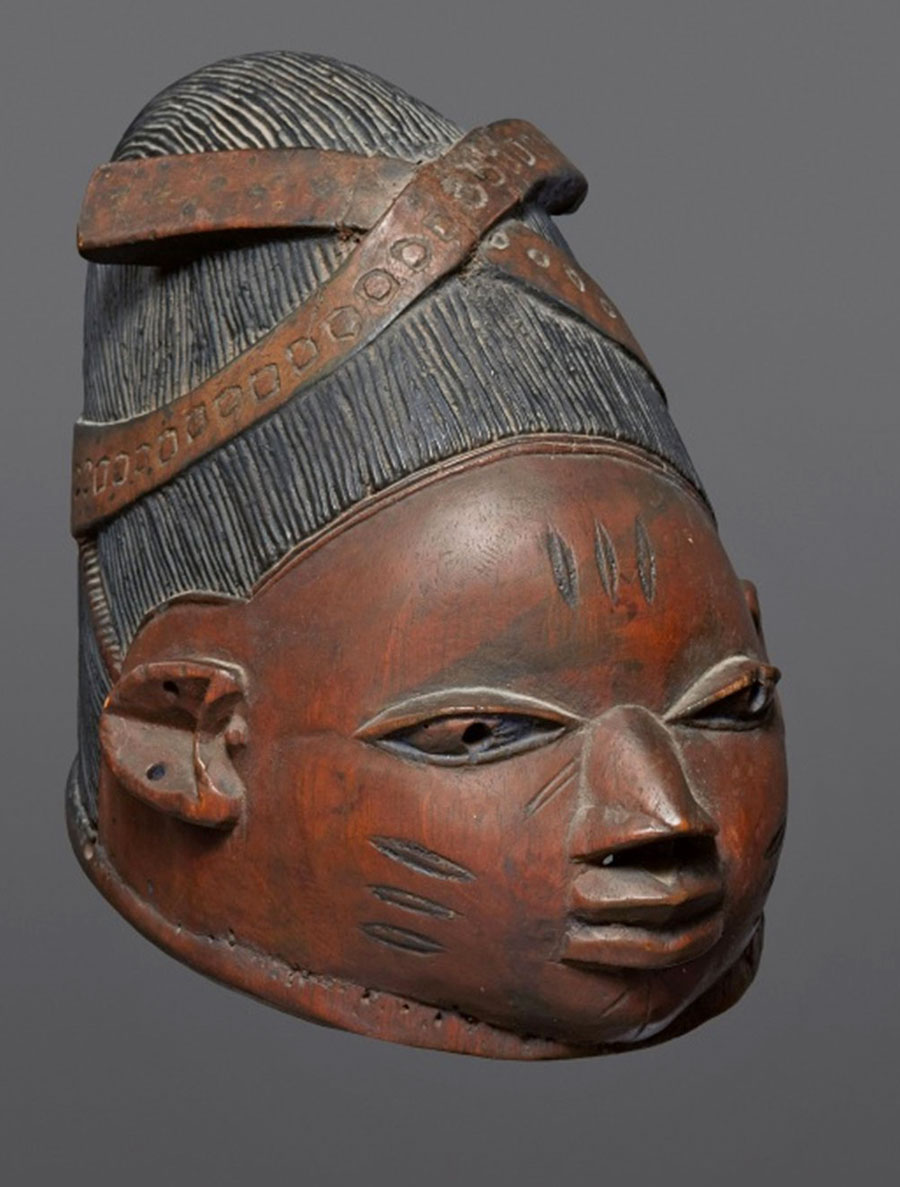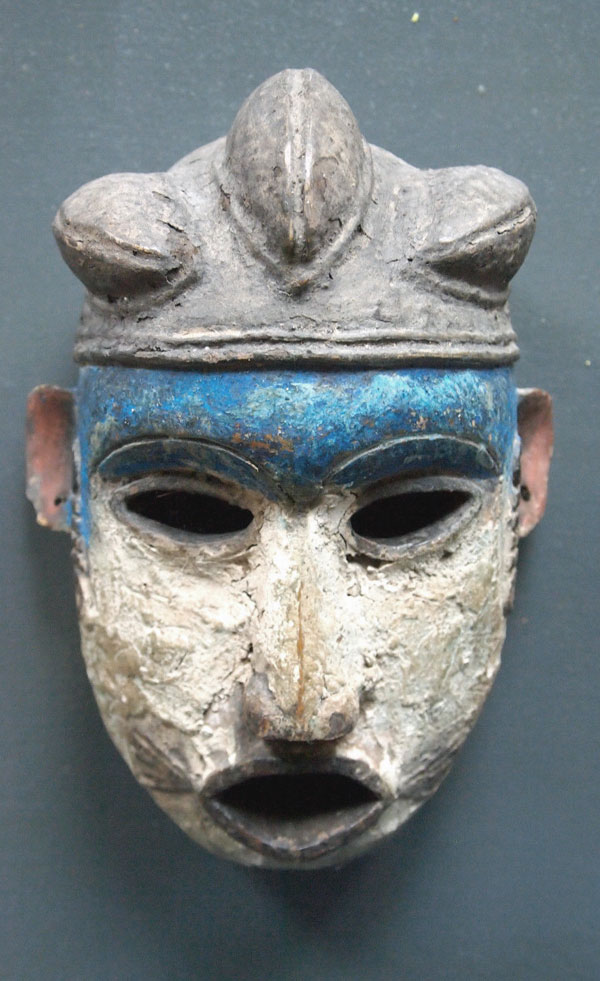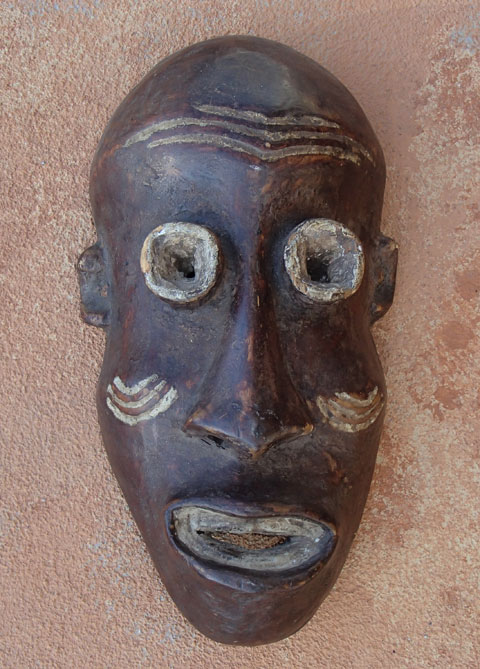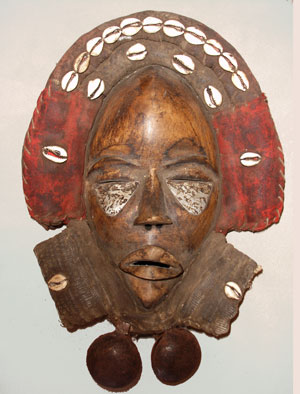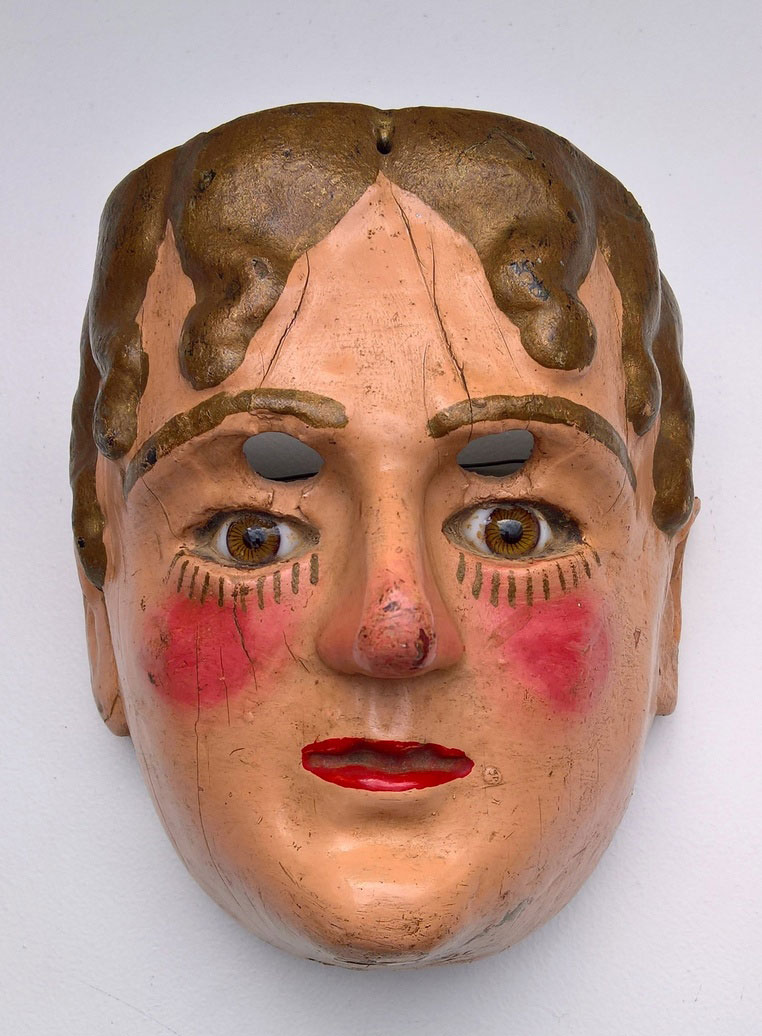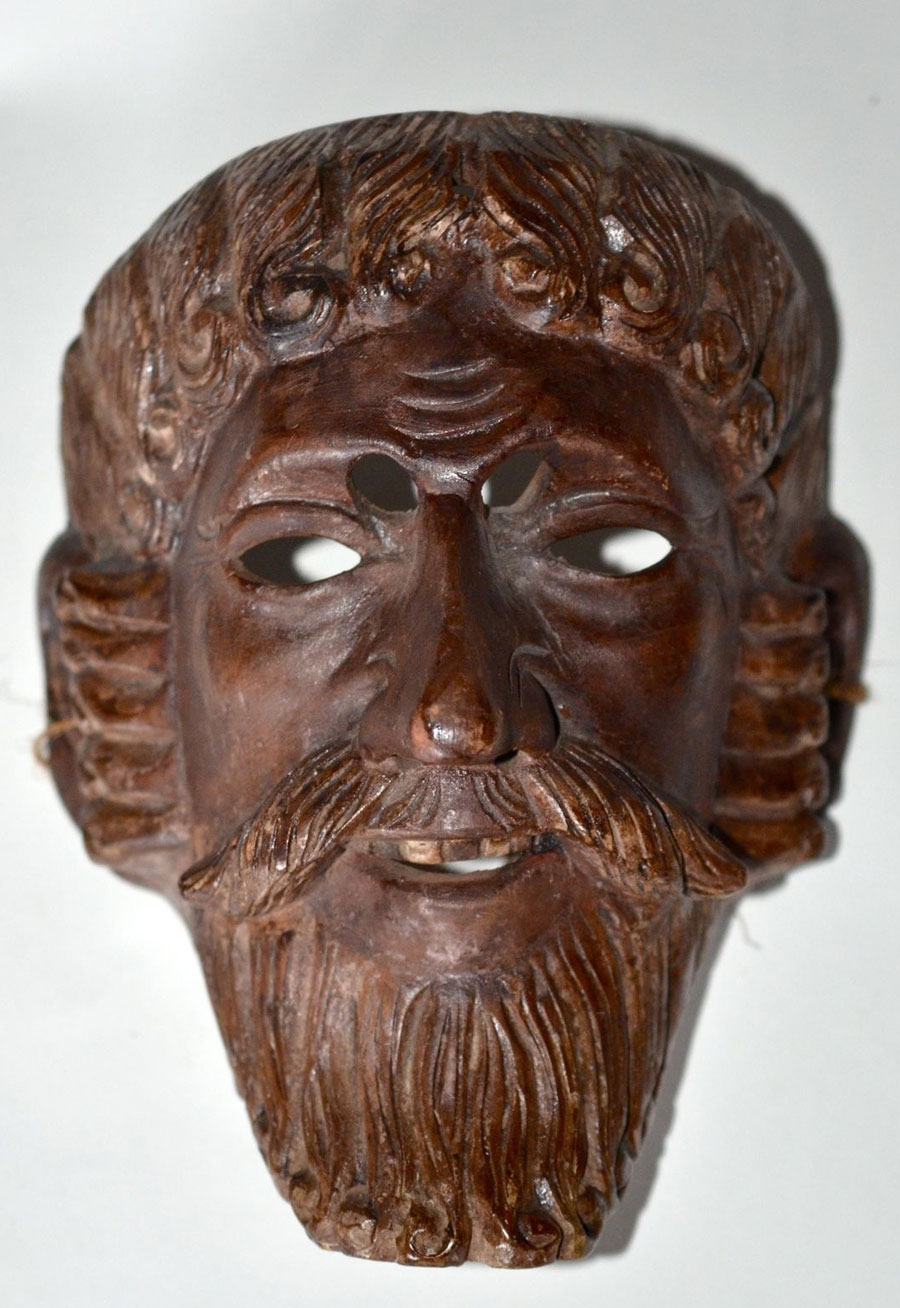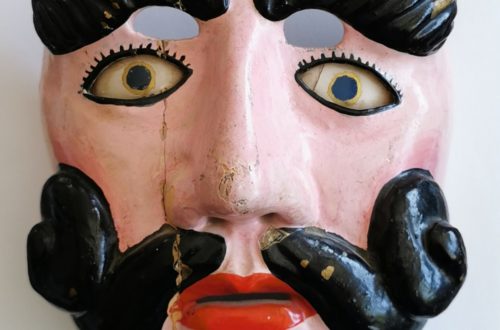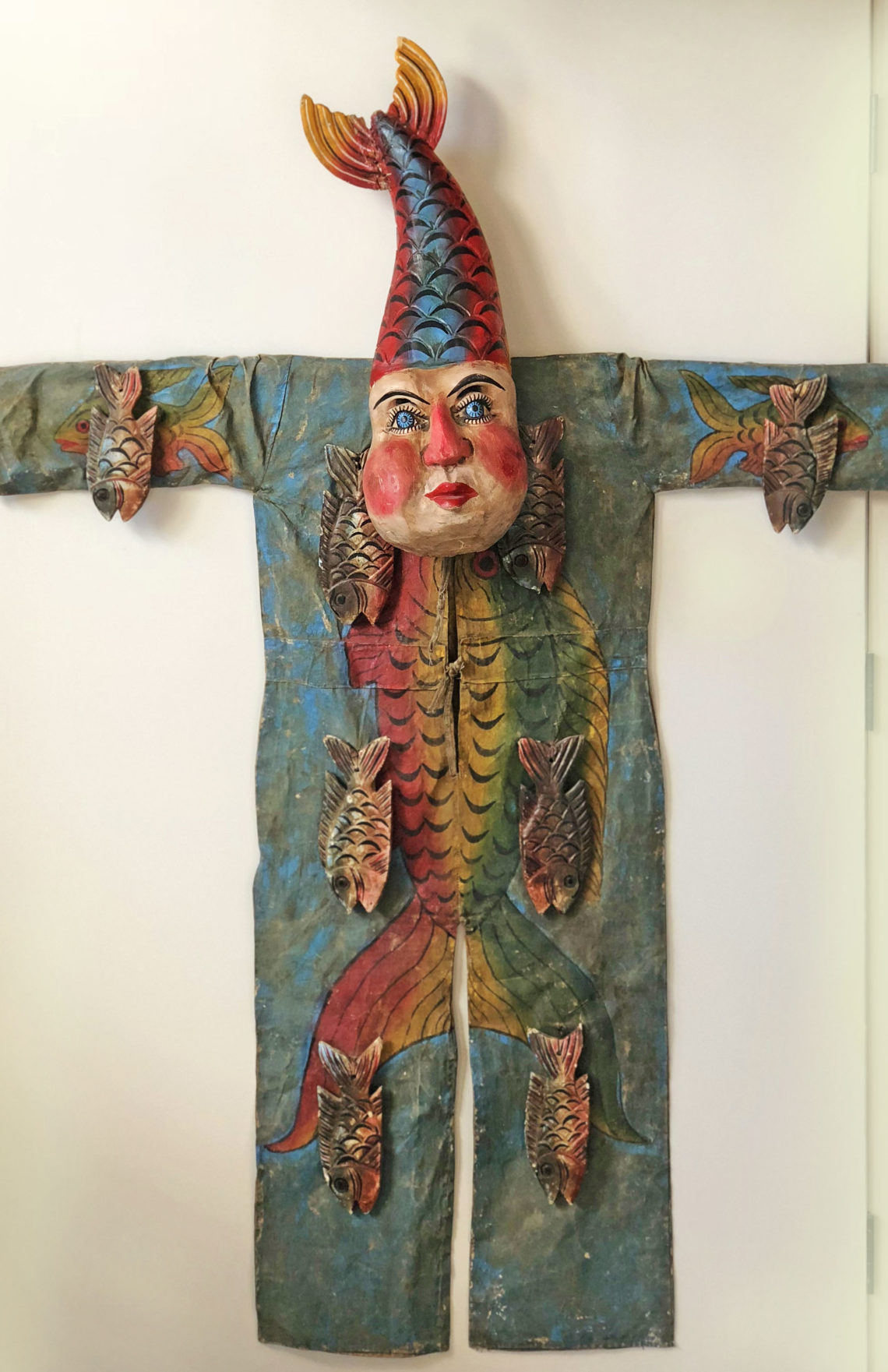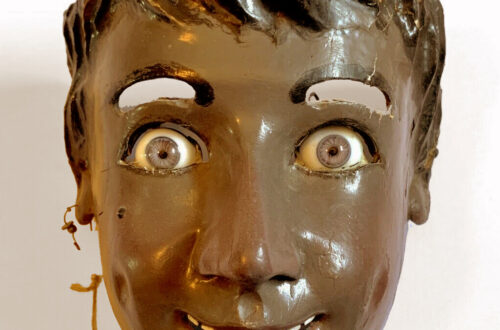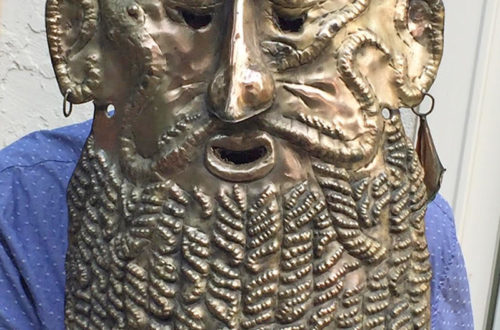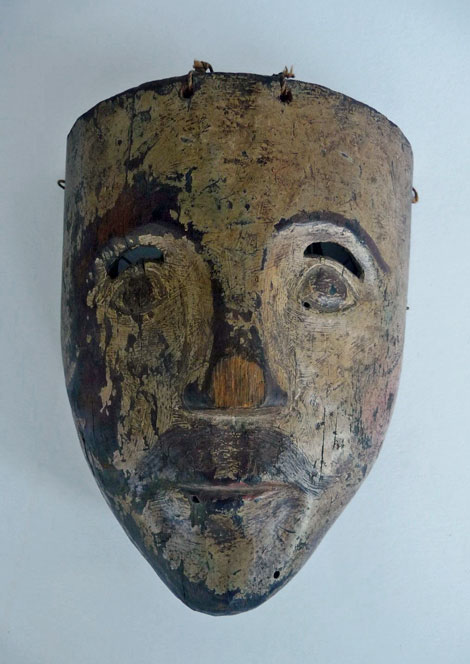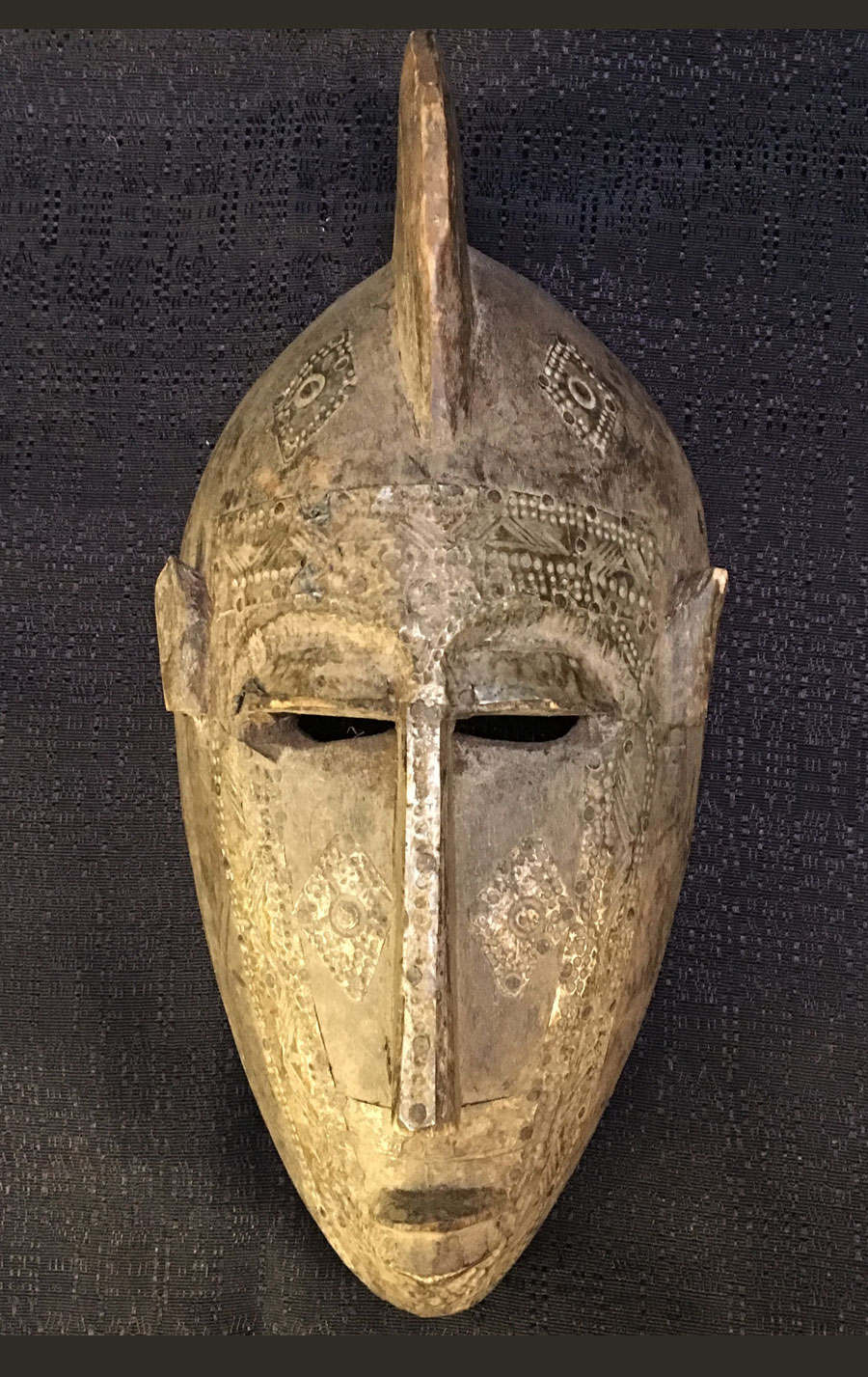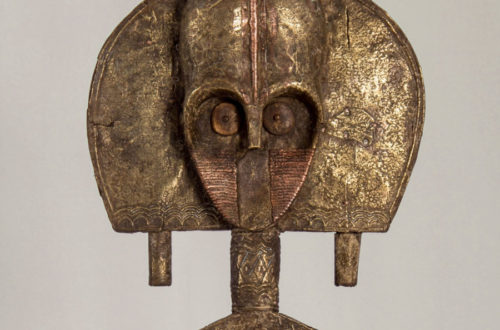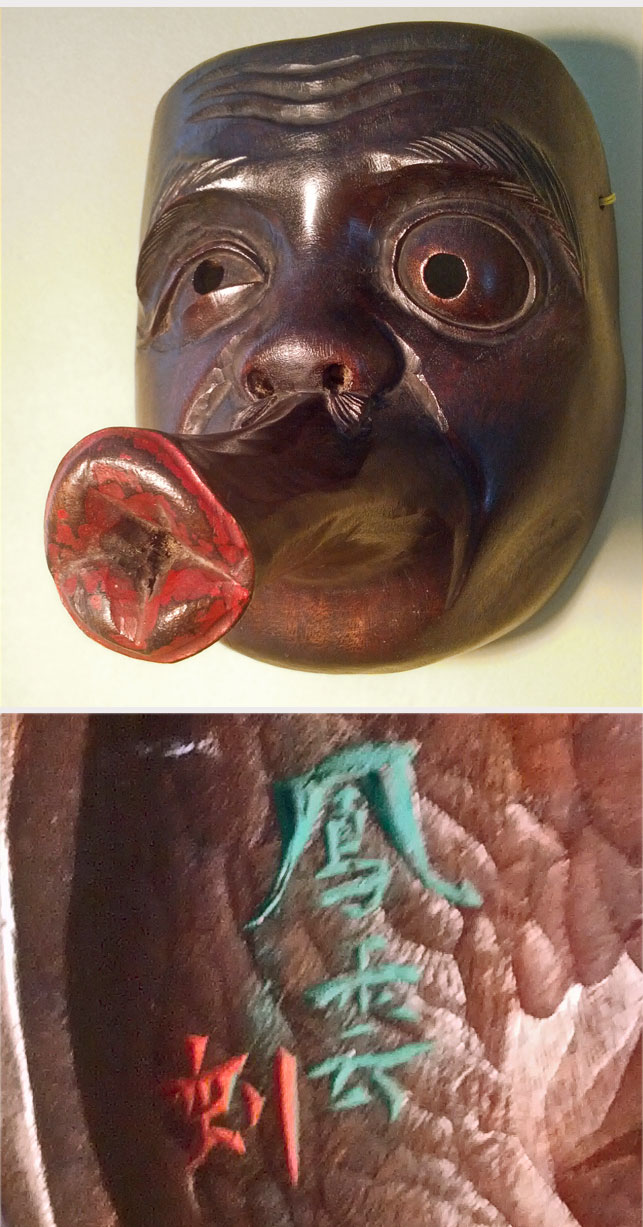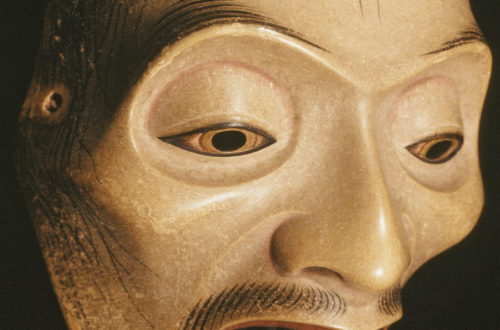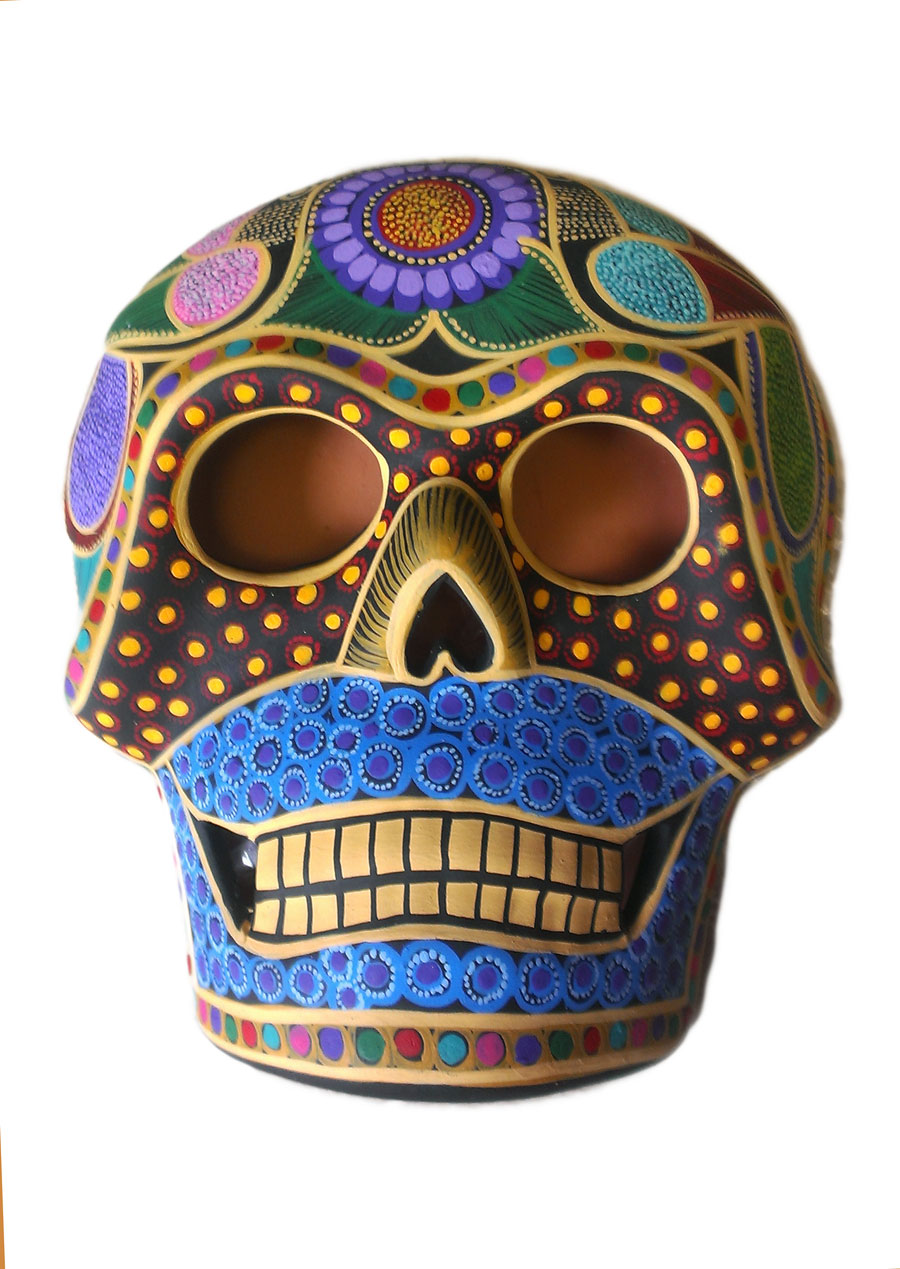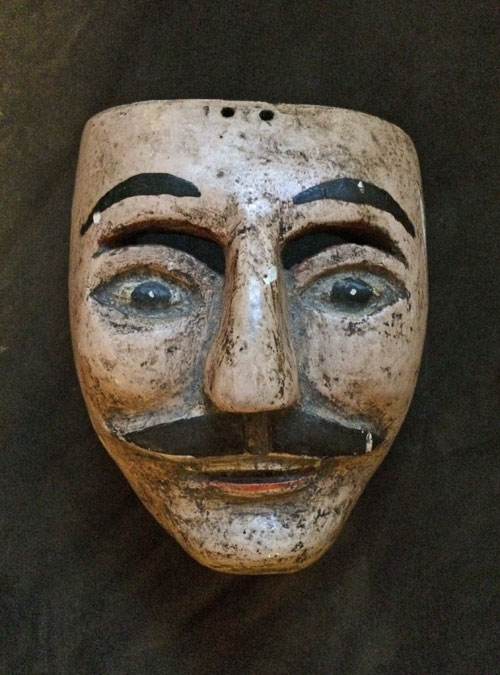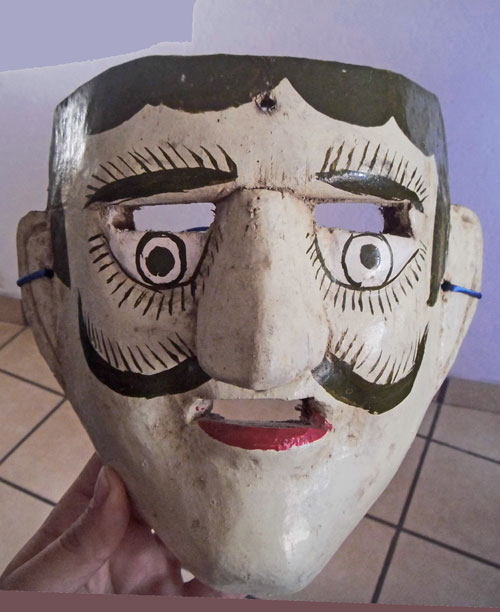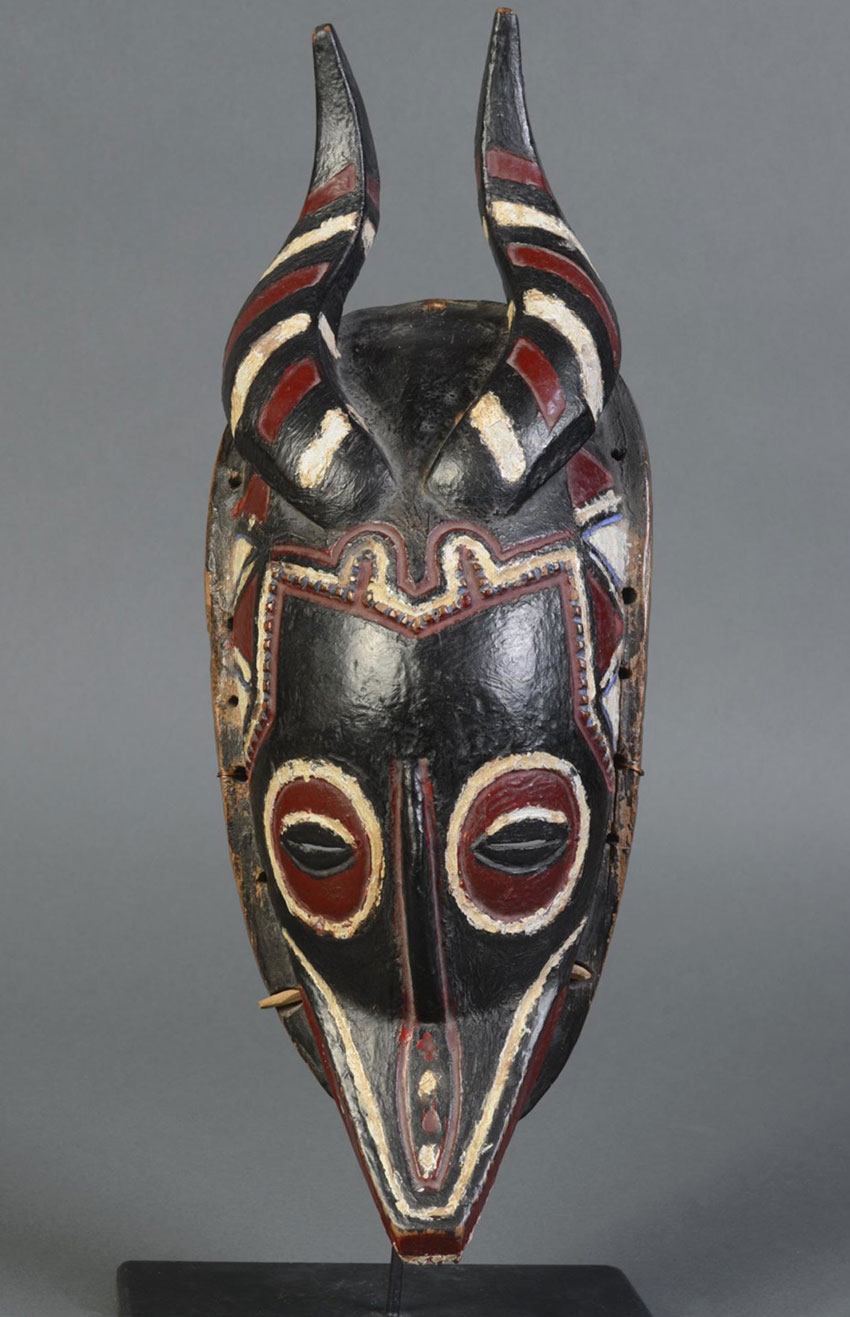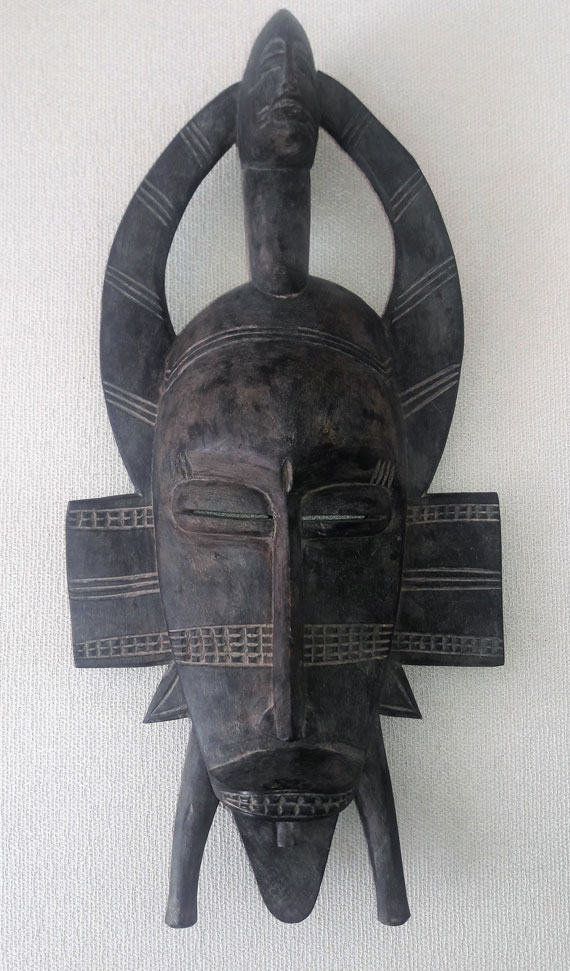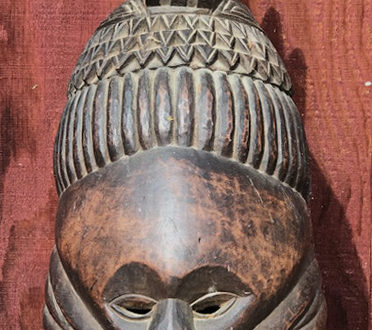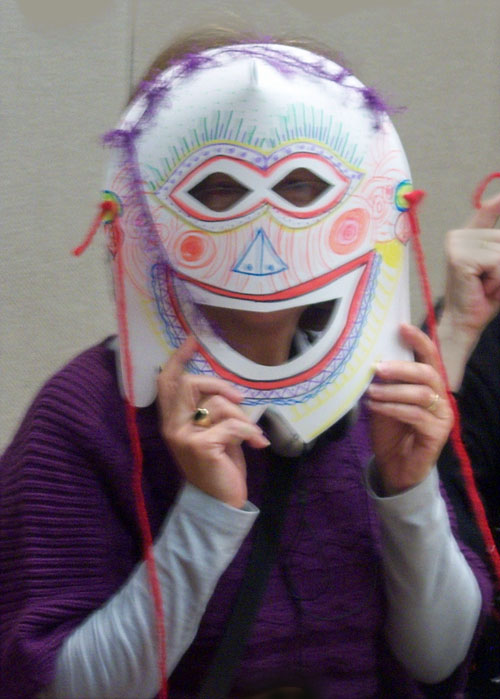MasksoftheWorld.com is a good place to start. We know something about masquerade all over each of the world’s continents. We also include masks for Halloween, protection, protest, fetishes and more. We deal with everything that goes on the face that is dry rather than viscous. But does that make us experts? No. The real experts specialize in certain continents of the world or specific countries or cultures. These specialists (sometimes called “tribal art dealers”) can tell you way more about a mask than we can… and MOTW does occasionally make mistakes. About 2 weeks ago I confused a water spirit mask from one culture in West Africa with a fire…
-
-
Why have a mask appraised?
This mask is a Baule Mblo and it comes from Ivory Coast in West Africa. It is obviously of good quality, but is it authentic or a carefully-made reproduction? You can learn more about Baule masks by going to “Africa” in our archive section. Full disclosure, I do mask appraisals, for which I am paid. Now that we’ve got that out of the way, why should you get a mask appraised? Here are some of the reasons people have. You are pretty sure it is valuable. How best to sell it? You want to keep the mask(s) but need to know more. For what should I insure it? Is…
-
We-Guere Mask from Africa
Guere Mask from the Ivory Coast can be very frighting. They are worn to terrify their enemy when at war. The Guere share many aspects of culture with the neighboring Dan tribe. They created masks that were used during festivities, funerals, rituals, wars, and that look rather scary and monstrous. The art of Guere people is stylistically connected to the Dan and both groups are often collectively referred to as We, meaning “men who easily forgive.” Like the Dan, the We use a wide variety of masquerades, which hold important regulatory position within their small, egalitarian communities. Masks are owned by families and used by individual lineage members in contexts…
-
Mystique of the African Gelede mask
While the specific meanings and use associated with ritual masks vary widely in different cultures, some traits are common to many African cultures. Ritual and ceremonial masks are an essential feature of the traditional culture of the peoples of a part of Sub-Saharan Africa. Masks used in a traditional context usually have a spiritual and religious meaning and they are used in ritual dances and social and religious events. A special status is attributed to the artists who create masks, and to those that wear them in ceremonies. In many cases, mask-making is an art that is passed on from father to son, along with the knowledge of the symbolic…
-
Excellent 100 yr-old mask
Q: Here is a small mask (6” height) of a “Cristiano”, with interesting moreria burns on the back. On the right side we see “ɛT”, the mark of Eugenio Tistoj (1855-1930), owner of the well-known moreria in Totonicapán, and on the left side a combination of “ATP”, the mark of Pedro Antonio Tistoj (1912-1978), son of Eugenio Tistoj, owner of the moreria after his father. These marks, together with the beautiful patina, allow to date the mask from the very early XXth century. As Jim Pieper reports in his book “Guatemala’s masks and dramas”, there are presently 2 morerias in Totonicapàn with the name Tistoj, both descendants of Eugenio Tistoj,…
-
Decorative fish mask from Mexico
Q: Would love your perspective on “Fish Man,” who joined our family’s collection of Guerrero, Mexico dance masks awhile back. How common are these full trajes and might you know the specific folklore behind this particular character? Ashley, 1467 A: The state of Guerrero has about 4 million people, most of whom are indigenous. They all have rich cultures that include many different masked dances. The state also has a large tourist industry which has always made masks for the trade. These decorative masks are very popular in Acapulco and the rest of the world. Most are okay as souvenirs, and a few can be very creative. Yours is the…
-
Another water spirit from Nigeria
Q: Found at town dump in a small town with old families. Fred, 1466 A: I just posted one of these September 26, 2018. It was an old, used example from the Met. Yours is a new one of good quality, possibly meant for use or sale. It has high value because water spirit headdresses from the Ijebu (also spelled Ijaw, Ijo) are hard to find. “Water deities are perceived to be the forces ultimately responsible for individual acquisition of wealth and power. Among the Kalabari, an Ijo subgroup that occupies the eastern part of the delta, one of the most important village institutions is the Ekine society, an association…
-
Noh mask from Japan
A book called Japanese Noh Masks shows almost 300 different characters from the Noh plays. This one is called Imawaka. The workmanship is fabulous. It is new and could be used by an actor, collector or decorator. Here is a short piece written by Stella Ko, of CNN… Their almond-shaped eyes stare blankly into space. The ambivalent corners of their mouths leave their moods utterly indiscernible.These wooden masks, used in an ancient form of Japanese theater called Noh, were made to be expressionless. But performers are charged with using slight and subtle movements to reveal the hidden emotions carved into each one. Dating back almost 1,000 years, Noh is…
-
Mexican day of the dead mask
A dealer says “These high quality clay skulls are a representation of the traditional sugar skulls, which are part of the Dia de los Muertos (Day of the Dead) Mexican Holiday. They are made of clay and hand painted by the indigenous people in Mexico. These are truly unique clay skulls and they make a great addition to any collection.” They are more often made of paper mache and can be worn as masks. The celebration of Day of the Dead is practiced by most Mexicans. Millions are made each year and they are always artistic, whether complete skulls or masks. In our category called Miscellaneous we show a number…
-
3 Guro antelope masks from West Africa
The Guro are a large ethnic group in Ivory Coast. They are known for the decorative masks they sell to tourists and export to the entire world. These impressive examples of tribal art are not authentic, but I admire their beauty. You can find plenty of them on the internet. Here are three used Guro antelope masks that would be prized by serious collectors. They look different from each other, and not much like the tourist masks. I think this may be because of age, the first being most recent and the last maybe 75 years old. The middle one has a jet plane painted on it. I’m pleased to…
